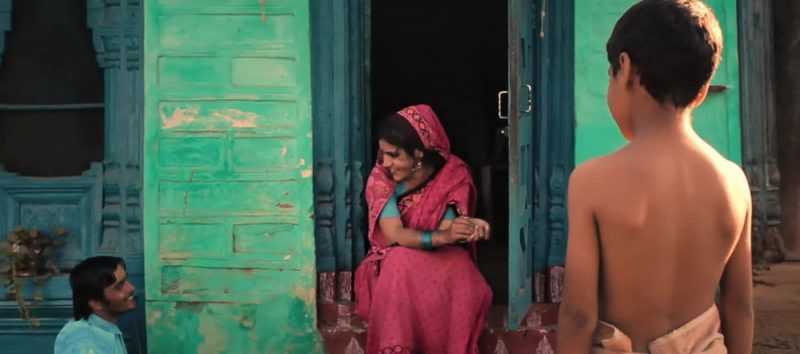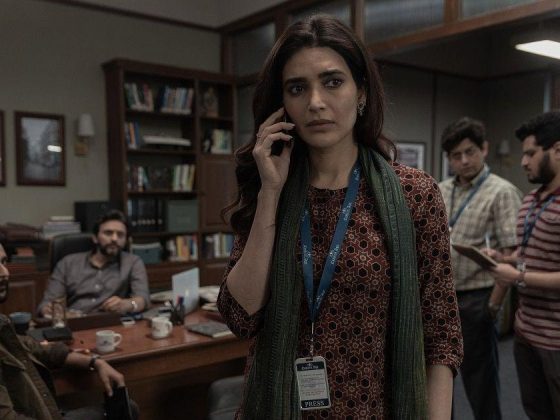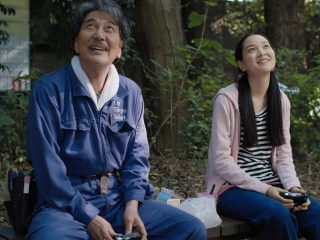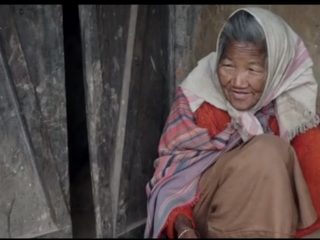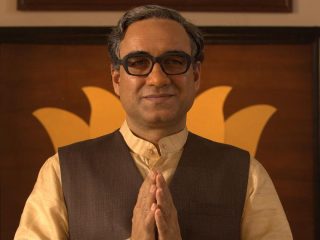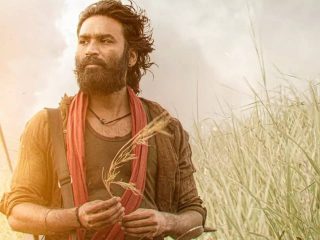During a certain period of life, we all desire to live alone in some solitude, surrounded by nature, away from this materialistic world. I am also among those who sometimes desire to venture into the Himalayas. In India, the Himalayas are counted as one of those places where people want to go seeking the “higher truth.”
The experience of watching the film is so similar to reading his book or story. This film contains a philosophy and philosophical conflict among characters that are relatable for all generations.
The film comments on the duality of human nature. The film doesn’t glorify the aesthetics of living alone in the Himalayas. It questions the existence of a monk who chose an ascetic path. It serves you a heart-aching philosophical tale that looks very simple but contains complexity in its meaning.
The film is about a monk, called Baba who is living in the mountains, but one day his world gets shattered when his disciple, Amar, brings a letter about the death of Baba’s mausi. The past events of his life start to unfold in front of his eyes, which were locked away in his memory.
And he decides to go back to his home and leave the path of asceticism. But the path of returning home is equally difficult as the path of moving forward. His childhood memories start to haunt him and make him sick with doubts about his identity. Is he living the truth, or is he escaping the truth?
Mesmerizing Incidents of Childhood
For the Baba, his childhood memories appear to haunt him, but for the audience, those memories serve as evocative images. In the bright sun, a woman wearing a pink saree and sky blue bangles runs between the fields, and the sound of bangles, laughter, and hummed songs create an ecstatic experience that brings a gush of nostalgia.
The everyday life of Suraj Singh Negi (Himanshu Bhandari), the childhood name of Baba, runs around school, home, and fields. His complexity of life lies between not going to school and taking a bath with Mausi (Savita Rani). The simple incidents—getting punished in school, going in the middle of fields on the back of a loved one, and looking at everything peculiarly—are all spellbinding scenes that create a nostalgic vibe that is as soothing as sorrowful.
His relationship with his mausi is shown in a layered way. I appreciate how it shows the relationship between Mausi and Suraj by adding a certain sensuality to Mausi’s voice, which makes her more than a motherly figure for Suraj. In childhood, we connect with those from whom we have received love. He has a certain detachment from his mother because she can’t give him enough time in the midst of handling all the household chores. And he shares a different bond with his alcoholic father, who tells him about the secrets of the Himalayas, but Suraj can’t trust him because of his false promises. So he only feels connected with Mausi.
How innocently the writer puts it – Suraj’s desire is just to get a bath from her. The tragedy of his life is as simple as his desire. One day his mausi refuses to give him a bath because he is not a child anymore. That event turns him into a man, and he takes a bath by himself. These simple, short moments that create a big impact on life go unnoticed, but when they get captured and executed in a poetic way, they build a more personal experience with the audience.
Theatrical and Poetic Rhythm
There are many scenes and dialogues that look more theatrical and poetic. For example, in the beginning, when Suraj asks his older self, “Aapke paas waqt ki kami hai kya?”
It places me in a position where these dialogues create an awakening.
There is one scene that sums up the whole philosophy of the film, when Suraj narrates about his father, who decides to be a clown because people used to laugh at him, but after being a clown, he can’t make anyone laugh. This tragedy of a human’s identity exists in the whole film when he questions, if a clown can’t make you laugh, can he still be a clown?
These poetic dialogues are distant from the usual dialogues in film, but they go with the whole idea of the film and contribute to its natural rhythm.
There are multiple scenes where Baba talks to his Mausi (who is a part of his imagination), and we can see Baba’s vulnerabilities.
In those vulnerable moments where we helplessly look into our own vulnerabilities, the questions asked by Mausi, like “Kaun dhundh raha hai tujhe?” and “Tu chhupa hua hai?” are simple questions that require deep, introspective answers. And to maintain that simplicity, Baba gives answers with conviction.
Philosophical Conflict
When Baba is juggling between his past and present, there is one more story that is moving parallel. Baba’s disciple, Amar, who lives with Baba and represents the idealistic self of Baba, is standing in the way of Baba going back to Suraj’s home. He persuades him and makes him remember his initial purpose of achieving asceticism. The whole scene between Baba and his disciple creates a philosophical conflict that resolves in a metaphorical way.
Manav Kaul’s film is layered with multiple philosophical questions that initiate the viewer’s internal conversation.
Amar’s presence can be interpreted as the younger self of Baba, who is walking blindly on a path to achieve some pretentious image. But when Baba asks him about his reason for coming to the Himalayas, he can’t find the right answer; his answers are the same as those we hear in religious books: salvation and wisdom. But Baba says these are all lies. In the end, it resolves by letting go of that emotion that we hold for years to become something.
Conclusion
This film peeks into the mindset of people who are always driven by the emotion of leaving everything behind. But the question does lie in the middle of their path: are they seeking moksha or are they escaping their responsibilities?
As a human, it’s a big question for someone to take accountability for their actions. In the film, Manav Kaul tries to tear down the glorified images of people who keep selling the journeys of people who left everything and lived in the Himalayas. This idea still excites me, but reaching it requires a certain conversation with myself. And we only know the answers when we reach the end point.
From the innocence of childhood to confronting the truth, this film takes me through different emotions. Suraj goes to the Himalayas for forgiveness from God and ends up living there. But after running away from the past, he soon gets caught by his own fears. But on the whole journey, he finally gets Mukti after passing through certain internal dialogues.
There are many films that open the window to show the philosophy of a person who decides to live alone, like Into the Wild, Nomadland, etc.
Tathagat also stands among them, but the simple layer that separates it from them is its poetic way of showing the tragedy of an escapist rather than the aesthetic life of an explorer.

